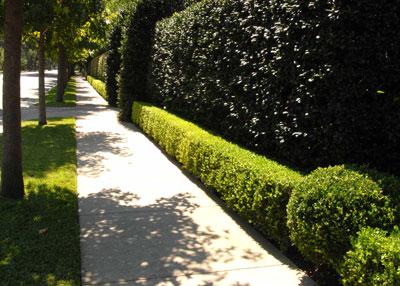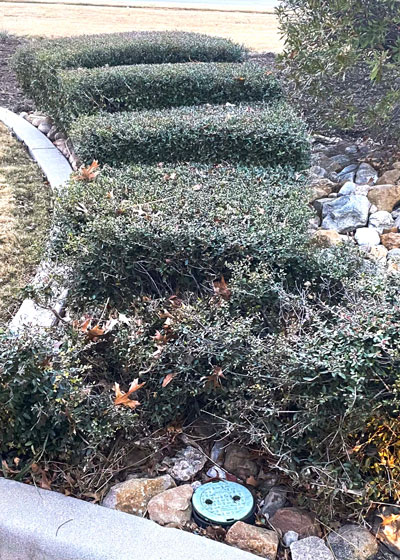Annual Pruning in the Sperry Gardens
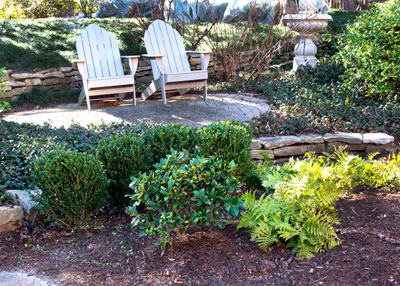
You might be wondering why I’d be shearing my dwarf hollies and boxwood into tight little globes? Simple. Because it makes them look fabulous by early April and for the rest of the season.
Most of the shrubs in our landscape spend their lives in the shadows of tall, mature pecan trees. Plants that grow in the shade tend to be more open, yes, even a little bit lanky.
I use this annual shearing to keep them tight and full. Each little twig that gets cut leads to two or three new shoots that fill in the voids. I try to finish all of this pruning a couple of weeks before they start putting out new growth for the spring, so February is prime time. If I waited much longer, the plants would be investing all their spring burst in growth that I would just be cutting away later. So I do it in the first couple of weeks of this month.
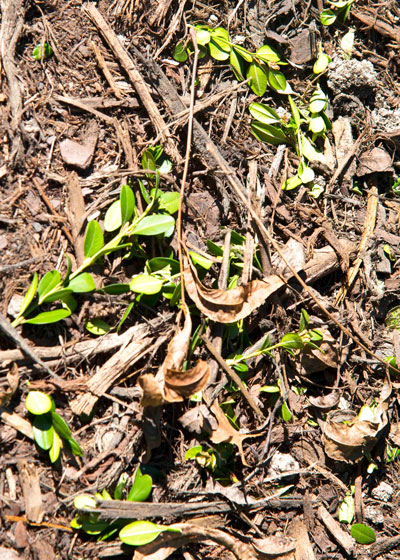
However, I don’t remove very much at a time. With dwarf yaupons, Carissas and dwarf Chinese hollies, I don’t take more than 1 or 2 inches off annually. By pruning each February, the plants never get so large that I have to do a major pruning and reshaping.
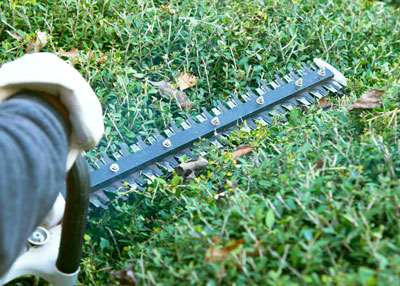
I bought a very good gasoline-powered hedge trimmer for this task many years ago, and this is the only work that it gets in the course of the growing season. Oh, it may get used a time or two to even up the tops of Asian jasmine or purple wintercreeper groundcover beds, but this February shrub shaping is its main duty at our place.
In fairness, before I close, I do need to admit that many beautiful gardens feature highly sheared, formally trained plants. If that’s a look that you like, go for it. There is no right or wrong way to landscape your house. But if you’re just squaring up plants to use as a straight-line “foundation planting” across the front of your house, do consider an easier alternative. This could be your year for a major landscaping makeover.
